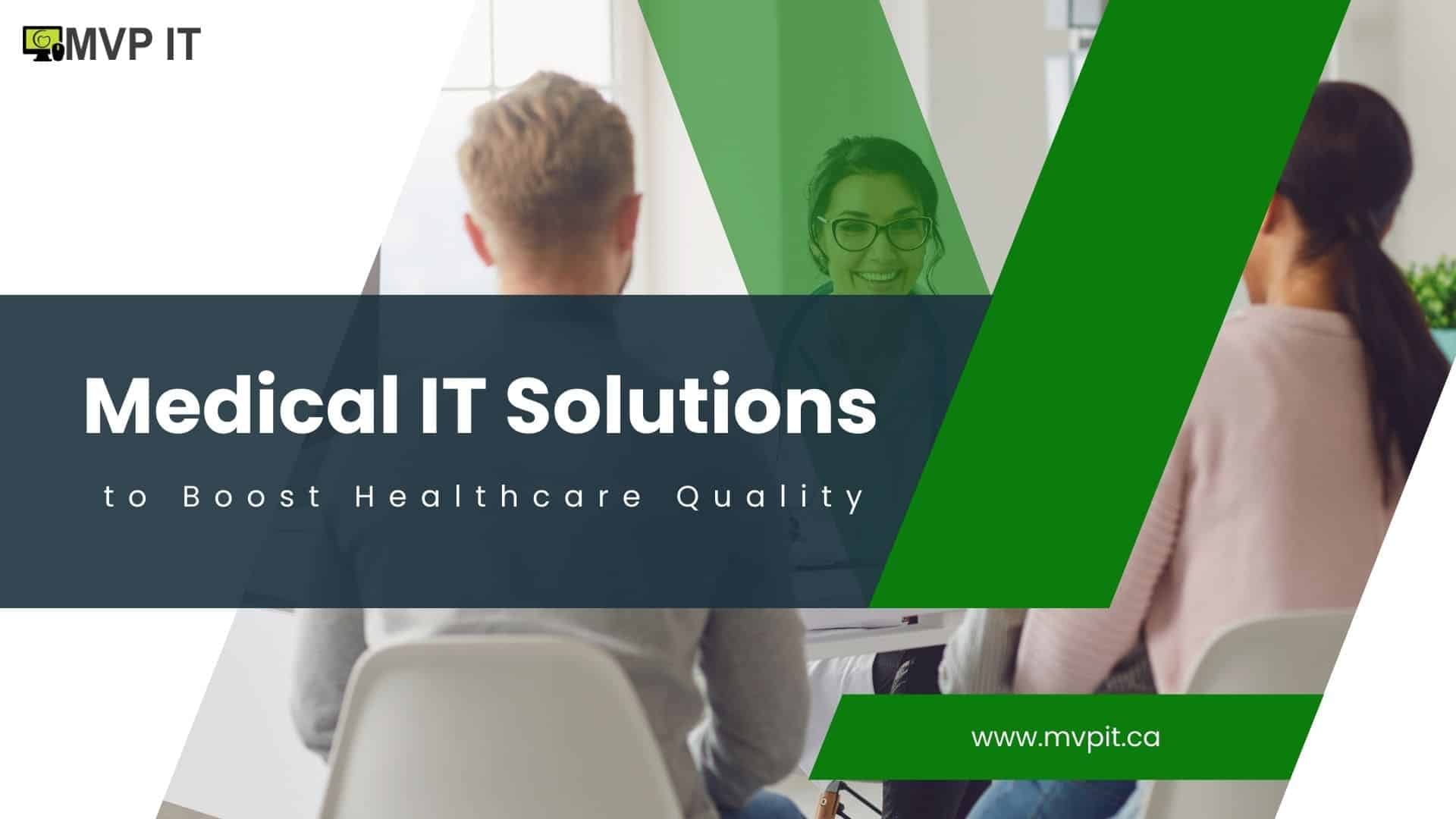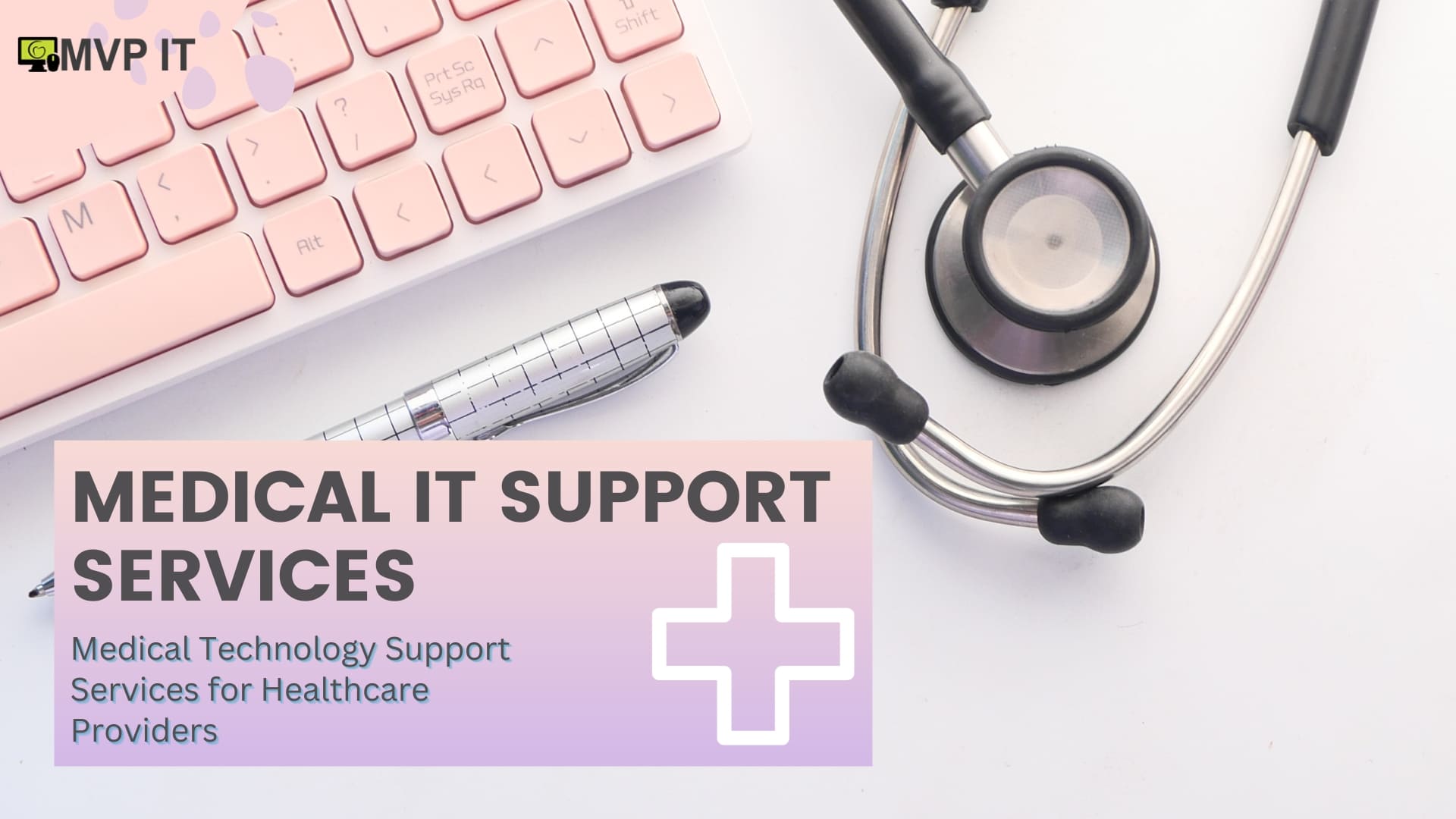In the dynamic landscape of healthcare, the integration of Medical IT Solutions has become a transformative force. These solutions encompass a range of technologies designed to streamline processes, enhance patient care, and ensure the security of sensitive medical data. Let’s delve into the world of Medical IT Solutions and explore their impact on the healthcare industry.
Medical IT solutions encompass a range of technological tools and systems designed to enhance efficiency, accuracy, and safety in healthcare settings. These solutions can include electronic health records (EHR) systems, telemedicine platforms, medical imaging software, patient portals, healthcare analytics, and more.
Key Components of Medical IT Solutions
Electronic Health Records (EHR)
One cornerstone of Medical IT Solutions is the implementation of Electronic Health Records (EHR). This digital version of patients’ paper charts provides real-time, secure, and instant access to patient information, promoting seamless collaboration among healthcare providers.
Telemedicine
Telemedicine has emerged as a game-changer, especially in the wake of global events that have necessitated remote healthcare delivery. Patients can now consult with healthcare professionals from the comfort of their homes, reducing the need for physical visits and improving accessibility.
Health Information Exchange (HIE)
Facilitating the sharing of patient information between different healthcare entities, health information exchange (HIE) plays a crucial role in improving care coordination and reducing duplication of tests or procedures.
Cybersecurity Measures
As medical data becomes increasingly digitized, robust cybersecurity measures are imperative. Medical IT Solutions employs advanced encryption, access controls, and monitoring systems to safeguard patient information from unauthorized access and cyber threats.
Advantages of Implementing Medical IT Solutions
Enhanced patient care
Medical IT solutions contribute to enhanced patient care by providing healthcare professionals with comprehensive and up-to-date information. This facilitates quicker and more accurate diagnoses, personalized treatment plans, and improved patient outcomes.
Efficient Workflow
Streamlining administrative and clinical workflows is a significant benefit of these solutions. From appointment scheduling to billing, automation reduces paperwork, minimizes errors, and allows healthcare providers to focus on delivering quality care.
Data Accuracy
The accuracy of medical records is paramount in healthcare. Medical IT solutions ensure that patient data is consistently accurate and easily accessible, reducing the likelihood of medical errors and improving overall healthcare quality.
Cost Savings
While the initial investment in medical IT solutions may seem substantial, the long-term cost savings are significant. Efficiency gains, reduced paperwork, and the avoidance of unnecessary procedures contribute to a more cost-effective healthcare system.
Use cutting-edge medical IT solutions to boost healthcare quality.
Initial Implementation Costs
One of the primary challenges faced by healthcare organizations is the initial cost of implementing Medical IT Solutions. However, it’s essential to view this as an investment in the long-term efficiency and effectiveness of healthcare delivery.
Staff Training
The successful adoption of these solutions relies on the effective training of healthcare staff. Resistance to change and the learning curve associated with new technologies can be mitigated through comprehensive training programs and ongoing support.
Data privacy concerns
With the digitization of medical records comes the concern for data privacy. Strict adherence to regulations such as HIPAA, coupled with robust cybersecurity measures, is crucial to maintaining patient trust and ensuring the confidentiality of sensitive information.
Integration Issues
Integrating new IT solutions with existing systems can pose challenges. Ensuring seamless integration is vital to prevent disruptions in healthcare services and to maximize the benefits of the implemented solutions.
Future Trends in Medical IT Solutions
Artificial intelligence in diagnostics
The integration of artificial intelligence (AI) in diagnostics holds immense potential for improving accuracy and efficiency. AI algorithms can analyze medical imaging, detect patterns, and assist healthcare professionals in making more informed decisions.
Remote patient monitoring
Advancements in wearable technology enable remote patient monitoring, allowing healthcare providers to track patients’ vital signs and health metrics in real-time. This proactive approach can lead to early detection of health issues and timely interventions.
Blockchain for Data Security
Blockchain technology offers a decentralized and secure method of storing and sharing medical data. Its implementation can address concerns about data integrity, ensuring that patient information remains tamper-proof and transparent.
Predictive Analytics
Predictive analytics uses historical data to identify trends and predict future outcomes. In healthcare, this can aid in anticipating disease outbreaks, optimizing resource allocation, and personalized treatment planning.
Success Stories
Hospitals and clinics worldwide have experienced transformative results through the implementation of medical IT solutions. For instance, XYZ Hospital witnessed a 30% improvement in patient outcomes after adopting a comprehensive EHR system. Such success stories highlight the tangible benefits of embracing technology in healthcare settings.
How Medical IT Solutions Contribute to Public Health
Tracking and Managing Disease Outbreaks
Medical IT solutions play a crucial role in tracking and managing disease outbreaks. Real-time data analysis enables health authorities to monitor the spread of diseases, implement preventive measures, and allocate resources effectively.
Facilitating vaccination programs
Efficient management of vaccination programs is vital for public health. Medical IT solutions streamline the process, from appointment scheduling to vaccine distribution, ensuring that immunization efforts are well-coordinated and accessible to the community.
Population health management
By aggregating and analyzing data on a population level, Medical IT Solutions supports population health management initiatives. Identifying health trends, understanding risk factors, and tailoring interventions contribute to the overall well-being of communities.
Overcoming Resistance to Change
Communication Strategies
Transparent communication about the benefits of medical IT solutions is essential to overcoming resistance. Highlighting improvements in patient care, workflow efficiency, and data accuracy can garner support from healthcare professionals.
Incentives for Healthcare Professionals
Providing incentives for healthcare professionals who actively embrace and contribute to the successful implementation of IT solutions can foster a positive attitude towards change.
Addressing Concerns Proactively
Proactively addressing concerns about data privacy, job security, and the impact on daily workflows is crucial. Open dialogue and involving healthcare staff in decision-making processes can alleviate apprehensions.
Continuous Improvement
The healthcare landscape is dynamic, and continuous improvement is necessary. Soliciting feedback, monitoring performance metrics, and implementing iterative improvements ensure that medical IT solutions evolve to meet the ever-changing needs of the healthcare industry.
Implementation in a Healthcare Facility
Step-by-step Process
ABC Clinic undertook the implementation of Medical IT Solutions in a phased approach. This involved a thorough needs assessment, staff training, and seamless integration with existing systems. The step-by-step process resulted in a smooth transition and improved overall efficiency.
Measurable Improvements
Post-implementation, ABC Clinic experienced a 20% reduction in administrative workload, a 15% increase in patient satisfaction, and a notable decrease in billing errors. These measurable improvements underscore the positive impact of embracing medical IT solutions.
Best Practices for Selecting and Implementing Medical IT Solutions
Assessing healthcare needs
Before selecting IT solutions, healthcare facilities must assess their specific needs. Understanding the unique requirements of the institution ensures that the chosen solutions align with organizational goals.
Scalability and flexibility
Opting for scalable and flexible IT solutions allows healthcare facilities to adapt to changing needs. This future-proofing ensures that the technology can grow alongside the organization without significant disruptions.
Vendor Selection
Thorough research and due diligence in selecting IT vendors are crucial. Choosing reputable vendors with a track record of successful implementations enhances the likelihood of a smooth and effective integration.
User feedback and iterative improvement
Continuous feedback from end-users is invaluable. Incorporating user suggestions and regularly updating and improving IT solutions ensure that they remain effective and user-friendly.
Regulatory Compliance in Medical IT Solutions
HIPAA and other relevant regulations
Adherence to regulations such as the Health Insurance Portability and Accountability Act (HIPAA) is non-negotiable. Ensuring that medical IT solutions comply with these regulations is paramount to maintaining the privacy and security of patient information.
Ensuring data security and privacy
Robust security measures, including encryption, access controls, and regular audits, are essential. Healthcare facilities must prioritize data security and privacy to build and maintain trust with patients.
The role of cloud computing in medical IT solutions
Benefits and Risks
Cloud computing offers flexibility and scalability, allowing healthcare organizations to access and store data remotely. While the benefits are significant, the risks, such as data breaches, must be carefully managed through encryption and secure authentication measures.
Examples of successful cloud integration
Notable healthcare institutions have successfully integrated cloud computing into their IT solutions, experiencing improved accessibility, cost-effectiveness, and data redundancy. These examples showcase the potential advantages of leveraging cloud technology in healthcare.
Realizing the Potential of Medical IT Solutions
Constant innovation and upgrading
The rapid pace of technological advancement requires healthcare organizations to prioritize continuous innovation and system upgrades. Staying abreast of the latest developments ensures that IT solutions remain effective and aligned with industry best practices.
Collaboration between the tech and healthcare industries
Effective collaboration between the technology and healthcare sectors is essential. This partnership fosters the development of cutting-edge solutions that address the unique challenges faced by healthcare professionals.
Global Perspective on Healthcare Technology
Considering a global perspective allows healthcare organizations to learn from international best practices. Sharing knowledge and experiences on a global scale contributes to the collective improvement of healthcare technology.
Conclusion
In conclusion, medical IT solutions represent a pivotal advancement in the healthcare industry. From enhancing patient care to streamlining workflows and contributing to public health, the benefits are substantial. Overcoming challenges and embracing continuous improvement will ensure that these solutions continue to shape the future of healthcare delivery.









